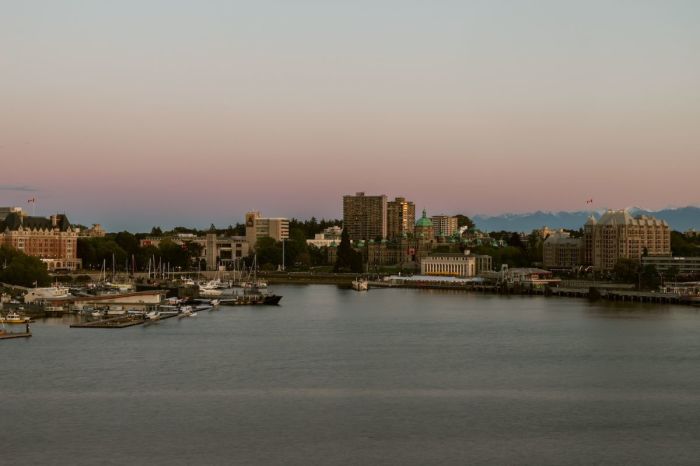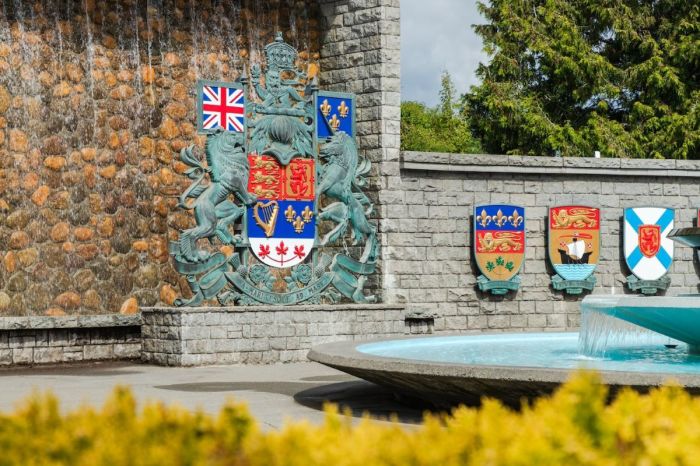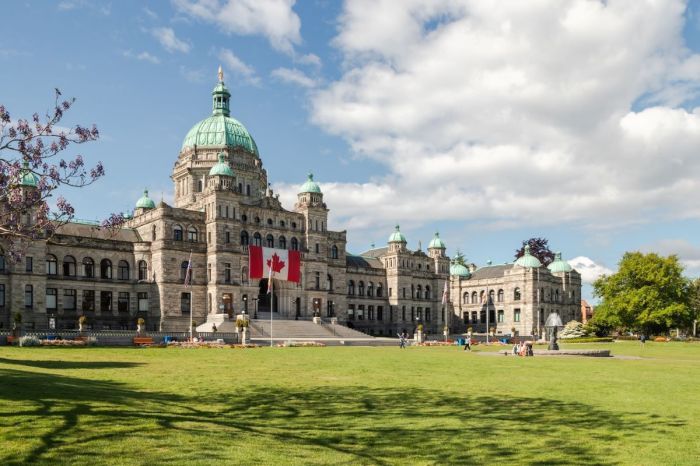
The Canadian city of Victoria has been called more English than the English.
That’s because the British immigrants who settled and established what became the provincial capital of British Columbia maintained their Englishness with everything from high tea to the love of gardening. Then there’s the city’s very name: Victoria’s name comes from the then-reigning monarch, Queen Victoria.
Victoria is located at the southern end of Vancouver Island, with Vancouver to the northeast on the Canadian mainland and Seattle in Washington state to the southeast across the Strait of Juan de Fuca, which serves as the international border. Washington is so close that the peaks of the Olympic Mountains frame views from Victoria’s picture-perfect harbor.
Though an imaginary line in the middle of the strait forming the Canada-United States border is today well-established, this wasn’t always the case.

If you go back to the first half of the 19th century, when fur trading was on the decline and soon-to-be discovered gold rushes would bring prospectors, there was considerable geopolitical tension between the U.S. and Britain, which ruled what later became Canada, over the so-called Oregon question.
The three-decades-long dispute over an invisible line on a map came at the height of America’s westward expansion, fueled by a belief in Manifest Destiny, and monarchal Britain’s imperial ambitions across the globe. Though the Oregon question was peacefully resolved in 1846 with the 49th parallel used to mark the border, Victoria’s establishment three years earlier served to plant the flag — literally and figuratively — and advance the British claim in the Pacific Northwest.
My visit to Victoria came last month in the days leading up to Victoria Day, a national holiday created in honor of Queen Victoria. Today, like our Memorial Day, it functions as the unofficial start of Canada’s summer season. While always an ostensibly patriotic affair, the holiday became more significant after the diplomatic spat between Canada and the U.S. over President Donald J. Trump’s talk of annexing the country as the 51st state.
Flags were everywhere, which surprised me because Canadians have never had the same flag-waving culture as Americans.

I mostly saw the instantly recognizable Maple Leaf flag, which celebrated its 60th birthday as Canada’s national flag earlier this year. The most prominent example was a massive version draped above the main entrance to the British Columbia Parliament Building (their version of a state capitol), which houses the provincial Legislature.
I also saw British Columbia’s distinctive provincial flag, which includes a Union Jack as recognition of the British past. Demand for that flag has been so great that the aptly named Flag Shop in downtown Victoria can’t keep it in stock. Even demand for a sticker version exceeds supply.
Unlike your typical U.S. state capital, which tends to be a backwater, Victoria has immense appeal, not least because of its past, when Victoria was more English than the English.
The most prominent keeper of the past is the Fairmont Empress Hotel, a fine example of the stately hotels built during the era of grand hotels at the turn of the last century. It offers an elegant, old-school afternoon tea that rivals the high teas I’ve experienced in London.
Beyond all things quaint is a modern, lively city that’s immensely walkable, thanks to a series of sidewalks and trails. You only need a car for drives around surrounding Vancouver Island, where you can find a small but growing wine scene that has transitioned from hybrid varietals to internationally known vitis vinifera grapes in recent years.
If you go
I flew to Victoria via a connection on WestJet in Calgary, Alberta. The Canadian airline has a partnership with Delta Air Lines. You could just as easily fly into Seattle or Vancouver and transfer to a seaplane for a quick flight into Victoria’s harbor airport. Renting a car and driving up with the car ferry is another option. Kenmore Air is a seaplane option.
Without question, Victoria’s finest hotel is the Fairmont Empress, which, like the city, takes its name from Queen Victoria. The 117-year-old hotel with its notable AAA four-diamond rating is where the great and the good, including royalty, stay.
If the Fairmont Empress isn’t an option, stay at the Pendray Inn or Hotel Grand Pacific.
One expects outstanding seafood, given the location along the coast. Victoria doesn’t disappoint. Oysters, halibut, salmon and other fresh, seasonal catches are on the menus of most restaurants. Recommended eateries include the fine-dining Marilena Cafe & Raw Bar and the considerably more casual Milestones with its harbor-facing terrace.
Tours of the provincial Legislature are free. The building, reminiscent of a baroque European palace, is open 8:30 a.m. to 4:30 p.m. Monday through Friday for self-guided tours. Guide-led tours are also offered. The Legislature’s website has the full schedule.
The Pedaler has several guided bicycle tours. Meanwhile, you can take a guided kayak tour of Victoria’s harbor through Kelp Reef Adventures. No experience with kayaks is necessary. I’m a novice and had no issues.
One stop that doesn’t seem to be on any of the tours is Christ Church Cathedral. The early 20th-century Gothic revival cathedral, the seat of the Anglican bishop, has a twin-towered west front with an enormous central pointed-arch that reminded me of the triple-arched facade at Peterborough Cathedral in England. In addition to regular services, the cathedral is open daily with no admission charge.
As museums go, the British Columbia Royal Museum is a must-visit. Covering everything from natural to human history, it includes a partial replica of the ship British Royal Navy Capt. George Vancouver used on his expedition along the West Coast in the late 18th century.
The English pastime of gardening is alive and well at the 55-acre Butchart Gardens. You don’t need to be a garden aficionado to appreciate the immense beauty. This is one of the few attractions that require a car. The drive from downtown Victoria is about 30 minutes each way.
To get a sense of the outdoors without venturing off the grid, visit Malahat Skywalk. The lookout offers 360-degree views, thanks to a spiraling ramp that climbs 10 stories above the tree line. There’s even a slide for kids or the young at heart to take down. Like the gardens, you’ll need a car to get here.
Dennis Lennox writes a travel column for The Christian Post.
Dennis Lennox writes about travel, politics and religious affairs. He has been published in the Financial Times, Independent, The Detroit News, Toronto Sun and other publications. Follow @dennislennox on Twitter.

















